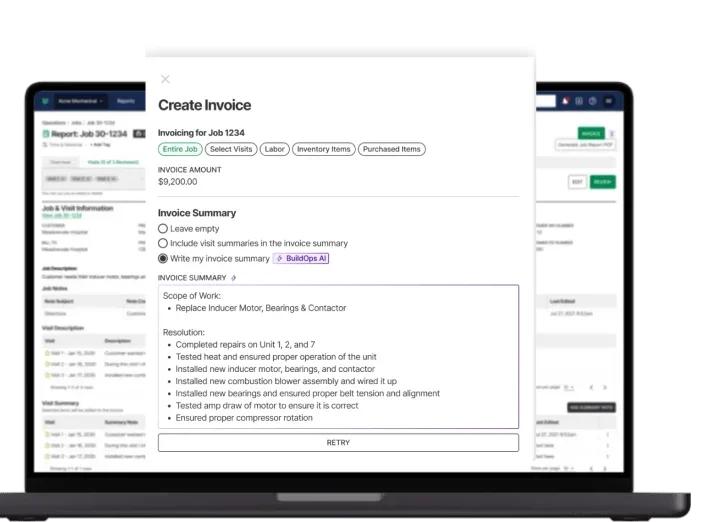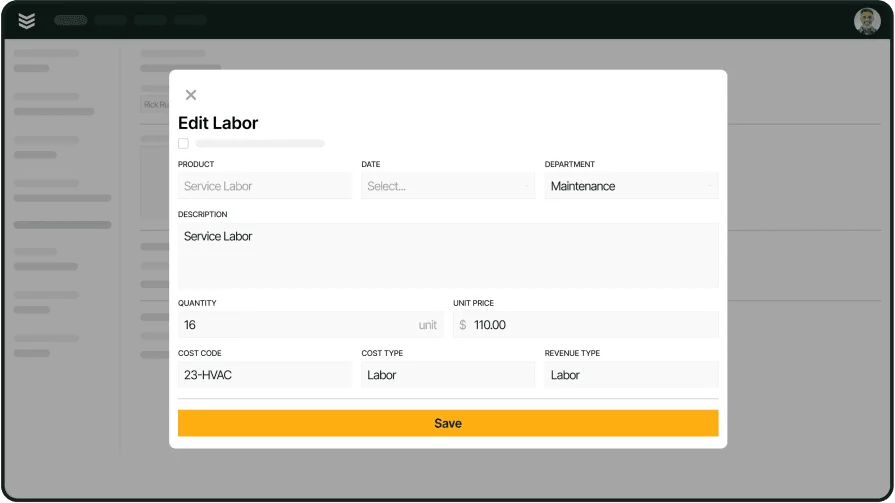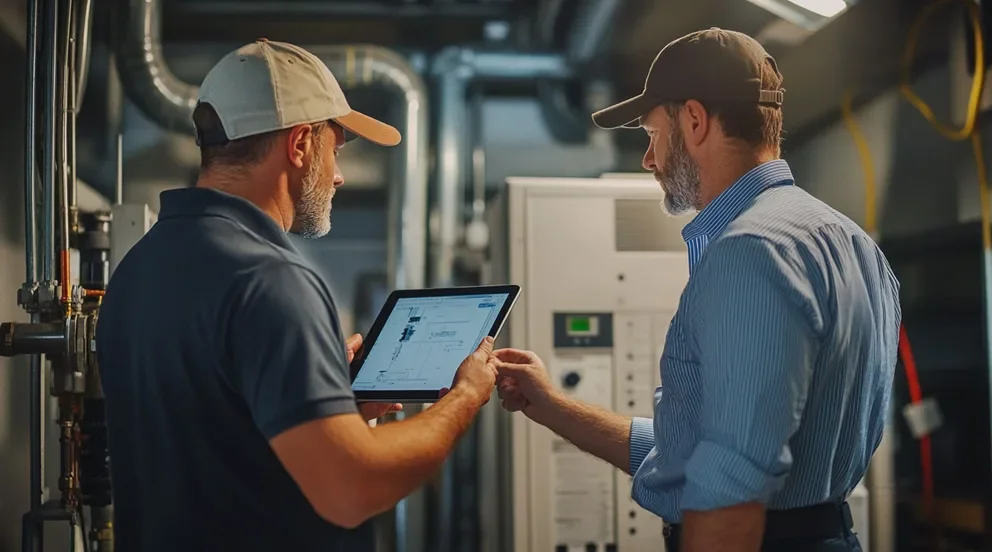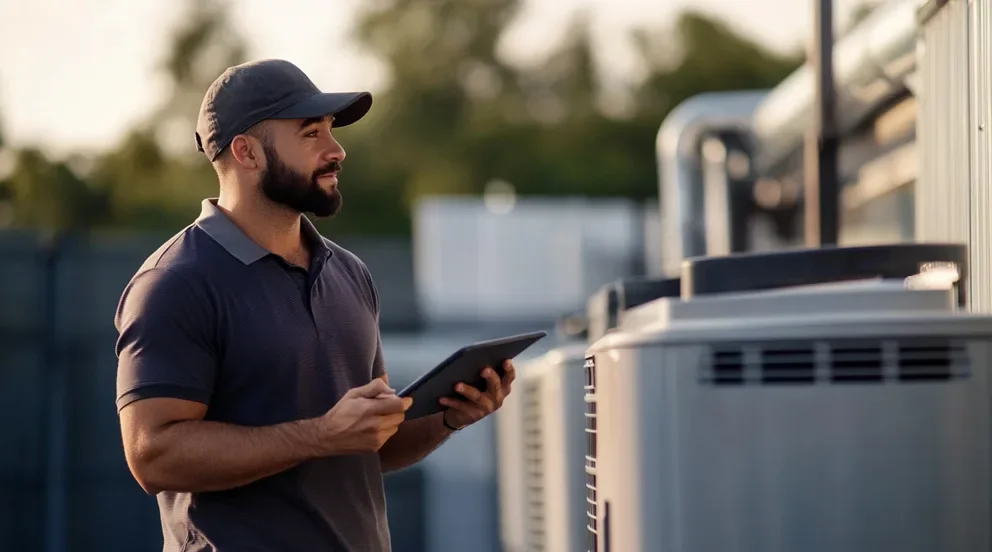Managing HVAC billing effectively is essential for keeping your business running smoothly. From ensuring invoices are accurate to streamlining payments, this guide breaks down the key components of successful billing for HVAC contractors. Whether you’re a seasoned professional or just starting out, you’ll find actionable insights to elevate your billing process so you always get paid on time.
Here’s what we’ll cover:
- The keys to successful HVAC billing
- What to include in an HVAC bill
- Different types of HVAC bills
- Top 3 HVAC billing software for residential & commercial contractors
Transitioning now to the heart of the matter: what exactly are the keys to successful HVAC billing? From efficient processes to proper documentation, mastering this will ensure your business stays on top of its game.
The keys to successful HVAC billing
HVAC billing refers to the process of creating, managing, and delivering invoices for HVAC services, ensuring accurate and timely payments for work completed. A successful billing system minimizes errors, speeds up cash flow, and builds trust with customers.
To excel at HVAC billing, contractors must go beyond sending out invoices. They need systems in place to streamline payments, analyze customer behaviors, and provide a seamless experience from service to settlement. Below are some actionable strategies to improve your billing process:
- Automate as much of the process as possible: Automation saves time and reduces human error. Invest in billing software that can generate invoices, track payments, and send reminders automatically. Tools like BuildOps integrate billing with scheduling, so you never miss a chargeable service.
- Analyze customer payment behavior: Review trends like late payments or frequent disputes. Identifying these patterns allows you to adjust terms or offer incentives for timely payments. For example, setting up early payment discounts can motivate customers to settle invoices faster.
- Incorporate a customer feedback system: A feedback loop after every transaction builds relationships and uncovers areas for improvement. Use surveys or automated emails to gather input and fine-tune your billing practices.
- Set clear payment terms upfront: Misunderstandings about costs or deadlines lead to disputes. Ensure every invoice clearly outlines terms, due dates, and payment methods. This keeps expectations aligned and reduces friction.
- Implement recurring billing for maintenance contracts: For HVAC contractors with service agreements, automated recurring billing eliminates the need to manually invoice for each visit. It also guarantees predictable cash flow.
- Track overdue invoices aggressively: Delayed payments harm your bottom line. Use tools that flag overdue accounts and automate follow-ups with professional reminders to avoid straining customer relationships.
By focusing on these strategies, HVAC professionals can simplify their billing, reduce disputes, and get paid faster. Next, let’s dive into the specifics of what should go on every HVAC invoice to ensure clarity and professionalism.
Deep Dive
There’s a lot that goes into nailing HVAC billing — but one of the most crucial is timing. We explore the invoicing sweet spot to help you perfect your invoice timing so payments are never late.
What to include in an HVAC bill
Creating a professional and clear HVAC invoice is crucial for smooth transactions and ensuring timely payments. A well-constructed bill helps your clients understand what they’re paying for and builds trust in your services. Here are the key components every HVAC bill should include:
- Business Information: Include your company name, logo, address, contact information, and license number. This makes your invoice look professional and ensures compliance with local regulations.
- Customer Details: Provide the customer’s name, address, and contact information. Double-check accuracy to avoid confusion or disputes.
- Invoice Number and Date: Assign a unique invoice number and clearly display the billing and service dates. These details help both you and your client track payments.
- Description of Services: Break down the services performed, such as "Air Conditioning Maintenance" or "Furnace Repair," along with quantities, hours worked, or specific tasks. Transparency reduces disputes.
- Material Costs: List any parts or materials used, including their quantity, description, and cost. Your clients appreciate knowing exactly what they're being billed for, but this also helps you manage your inventory
- Total Cost and Payment Terms: Highlight the total amount due, including any applicable taxes, and specify the payment terms. Clearly state the due date, accepted payment methods, and penalties for late payments.
A complete and well-organized invoice not only speeds up payment but also leaves a positive impression on your clients.
Deep Dive
If you want to simplify your billing process, check out our list of the best HVAC invoice templates to get started. It’s designed to help you create professional invoices that cover all the bases.
Different types of HVAC bills
Billing methods can vary based on the type of services you provide, your business model, and your clients' preferences. Choosing the right billing approach ensures clarity and builds trust while keeping your operations efficient. Here are the most common types of HVAC bills and what makes them unique:
- Flat rate billing: Flat rate billing involves charging a fixed price for a specific service or job. This method simplifies invoicing and helps customers know upfront what to expect. It’s ideal for routine tasks like seasonal HVAC maintenance, where the scope and costs are predictable.
- Time & materials billing: This method calculates charges based on the time spent on a job and the cost of materials used. It offers flexibility for jobs with uncertain scopes, like emergency repairs. While transparent, it can lead to customer concerns if the costs exceed initial estimates.
- Pay-as-you-go billing: With this approach, customers are billed incrementally as services are provided, often for long-term projects. It ensures steady cash flow and keeps clients informed throughout the process. It’s particularly useful for projects like large system installations or phased upgrades.
- Tiered billing: Tiered billing offers customers options with different service levels at varying price points. For instance, basic, premium, and deluxe maintenance packages. This gives customers flexibility while enabling you to upsell more comprehensive services.
Each billing method has its strengths, but software can help you implement and manage these systems effortlessly. Let’s explore the best HVAC billing software that simplifies invoicing for residential and commercial contractors.
Top 3 HVAC billing software for residential & commercial contractors
The right billing software does more than organize your invoices—it gets you paid faster and keeps your business running smoothly. You work hard every day; your tools should make it easier to stay on top of billing and keep your customers happy. Learn more about HVAC billing software and see how the right solution can make all the difference for your business. But first, let’s break down the top picks designed with pros like you in mind.
1. Best for commercial contractors: BuildOps
BuildOps was designed with commercial contractors in mind. This all-in-one solution simplifies invoicing by connecting it with other critical processes like scheduling, dispatching, and project management. Its intuitive platform allows you to create, send, and track invoices in real-time, reducing errors and speeding up payments.
What Sets This Apart for Commercial: BuildOps offers advanced features like hierarchical customer organization and integrated payment processing, ensuring you can manage even complex projects with ease. The platform also supports detailed reporting, helping you stay on top of financial performance.

Experience the efficiency of BuildOps
Find out how our HVAC invoicing solution can reduce late payments.
2. Best for residential: mHelpDesk
Image Source: mHelpDesk
mHelpDesk simplifies billing for residential contractors with an easy-to-use platform. It includes features like job tracking, invoice generation, and customer management, making it ideal for small to medium-sized businesses. However, it lacks the advanced automation and deep integrations that larger commercial contractors need to scale efficiently.
Learn more about mHelpDesk's invoicing and billing features.
3. Best for general contractors: Tradify
Image Source: Tradify
Tradify offers a simple solution for managing invoicing, quoting, and scheduling, all from one place. Designed for general contractors, it supports both one-off jobs and ongoing projects. That said, it doesn’t provide the robust reporting and enterprise-level workflow automation that commercial contractors rely on for complex operations.
What Sets This Apart for General Contractors: Tradify’s mobile app ensures contractors can create and send invoices directly from the job site, speeding up cash flow and reducing delays.
Explore how Tradify can help your business with your invoicing needs.
At the end of the day, your billing system shouldn’t slow you down—it should work as hard as you do. Whether it’s automating invoices, tracking payments, or keeping your customers happy, having a tool that can do all these makes billing a breeze. The best part? Features like integrated scheduling, real-time tracking, and advanced reporting aren’t standard in most platforms—but with BuildOps, they’re all in one place.

Simplify billing and boost cash flow
Find out how BuildOps can support you in optimizing your billing processes.





